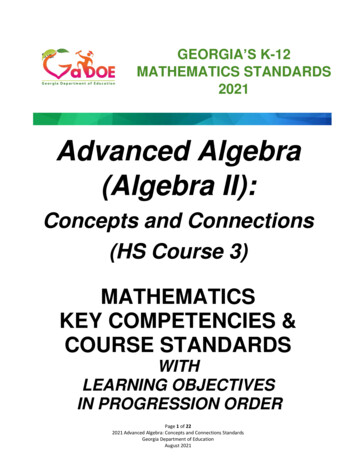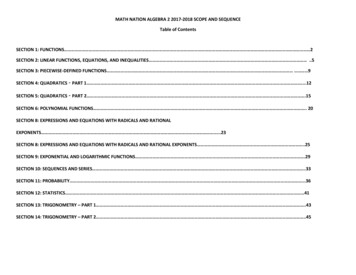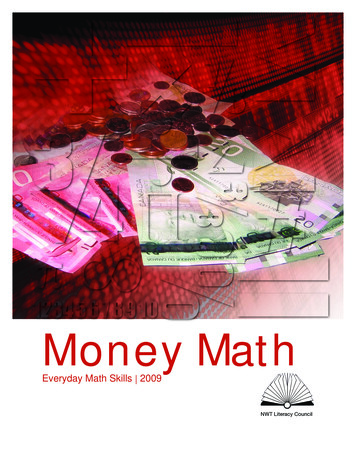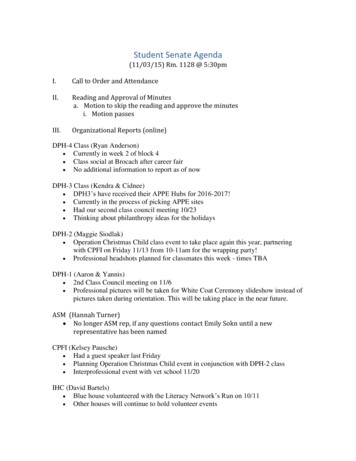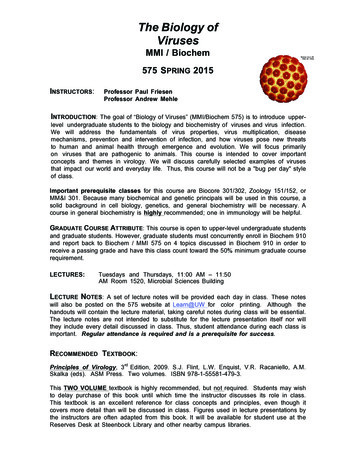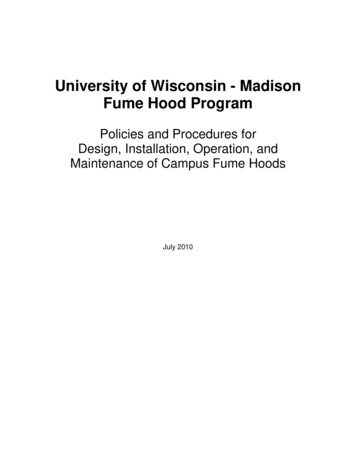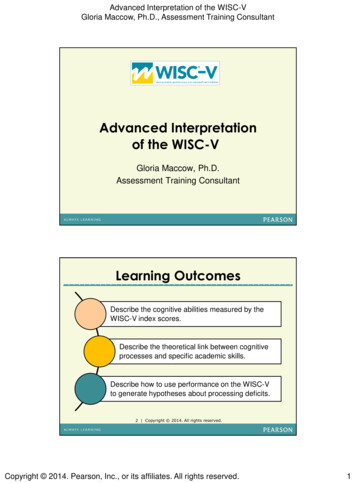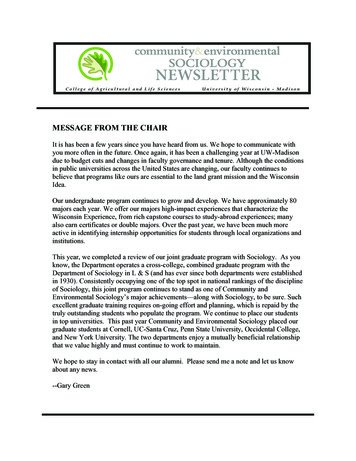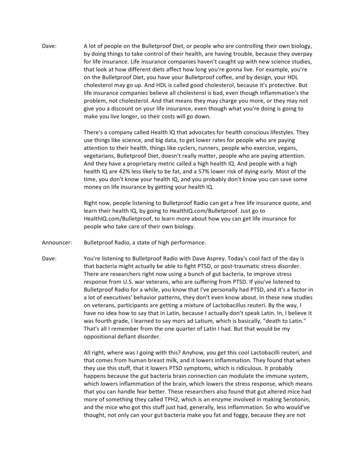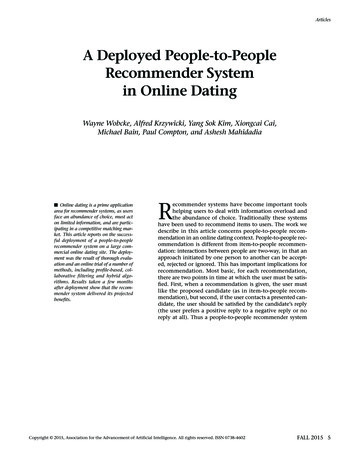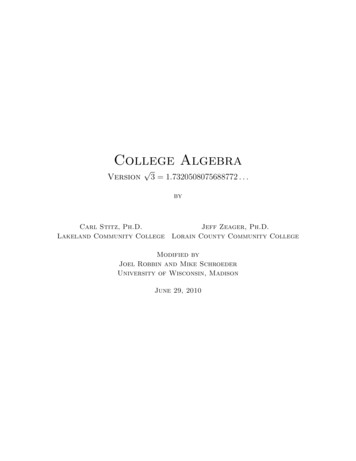
Transcription
College Algebra Version3 1.7320508075688772 . . .byCarl Stitz, Ph.D.Lakeland Community CollegeJeff Zeager, Ph.D.Lorain County Community CollegeModified byJoel Robbin and Mike SchroederUniversity of Wisconsin, MadisonJune 29, 2010
Table of ContentsPreface0 Basic Algebra0.1 The Laws of Algebra0.2 Kinds of Numbers .0.3 Exponents . . . . . .0.4 Absolute Value . . .0.5 Solving Equations .0.6 Exercises . . . . . .0.7 Answers . . . . . . .v.1169101213141 Coordinates1.1 The Cartesian Coordinate Plane1.1.1 Distance in the Plane . .1.1.2 Exercises . . . . . . . . .1.1.3 Answers . . . . . . . . . .1.2 Relations . . . . . . . . . . . . .1.2.1 Exercises . . . . . . . . .1.2.2 Answers . . . . . . . . . .1.3 Graphs of Equations . . . . . . .1.3.1 Exercises . . . . . . . . .1.3.2 Answers . . . . . . . . . .1.4 Three Interesting Curves . . . . .1.4.1 Circles . . . . . . . . . . .1.4.2 Parabolas . . . . . . . . .1.4.3 Ellipses . . . . . . . . . .1.4.4 Exercises . . . . . . . . .1.4.5 Answers . . . . . . . . . .1515202527283234364243494953616669.2 Functions772.1 Introduction to Functions . . . . . . . . . . . . . . . . . . . . . . . . . . . . . . . . . 772.1.1 Exercises . . . . . . . . . . . . . . . . . . . . . . . . . . . . . . . . . . . . . . 83
ivTable of Contents2.22.32.42.52.1.2 Answers . . . . .Function Notation . . .2.2.1 Exercises . . . .2.2.2 Answers . . . . .Function Arithmetic . .2.3.1 Exercises . . . .2.3.2 Answers . . . . .Graphs of Functions . .2.4.1 General Function2.4.2 Exercises . . . .2.4.3 Answers . . . . .Transformations . . . .2.5.1 Exercises . . . .2.5.2 Answers . . . . . . . . . . . . . . . . . . . . . . . . . . . . . . . . . . . . . . . . . . . . .Behavior. . . . . . . . . . . . . . . . . . . . . . . . . .3 Linear and Quadratic Functions3.1 Linear Functions . . . . . . . . . . .3.1.1 Exercises . . . . . . . . . . .3.1.2 Answers . . . . . . . . . . . .3.2 Defining Functions (Word Problems)3.2.1 Exercises . . . . . . . . . . .3.2.2 Answers . . . . . . . . . . . .3.3 Quadratic Functions . . . . . . . . .3.3.1 Exercises . . . . . . . . . . .3.3.2 Answers . . . . . . . . . . . .3.4 Inequalities . . . . . . . . . . . . . .3.4.1 Exercises . . . . . . . . . . .3.4.2 Answers . . . . . . . . . . . .4 Polynomial Functions4.1 Graphs of Polynomials . . . .4.1.1 Exercises . . . . . . .4.1.2 Answers . . . . . . . .4.2 The Factor Theorem and The4.2.1 Exercises . . . . . . .4.2.2 Answers . . . . . . . . . . . . . . . . . . . . . . . . . . . . . . . . . . . . . . . . .Remainder Theorem. . . . . . . . . . . . . . . . . . . . . . .5 Rational Functions5.1 Introduction to Rational Functions5.1.1 Exercises . . . . . . . . . .5.1.2 Answers . . . . . . . . . . .5.2 Graphs of Rational Functions . . .5.2.1 Exercises . . . . . . . . . .8687939698103105106113120123127149151.157. 157. 170. 173. 175. 181. 181. 182. 192. 194. 198. 211. 212.215. 215. 228. 231. 235. 244. 245.247247259261263276
Table of Contentsv.278284291293.2952953053073093283297 Exponential and Logarithmic Functions7.1 Introduction to Exponential and Logarithmic Functions7.1.1 Exercises . . . . . . . . . . . . . . . . . . . . . .7.1.2 Answers . . . . . . . . . . . . . . . . . . . . . . .7.2 Properties of Logarithms . . . . . . . . . . . . . . . . . .7.2.1 Exercises . . . . . . . . . . . . . . . . . . . . . .7.2.2 Answers . . . . . . . . . . . . . . . . . . . . . . .7.3 Exponential Equations and Inequalities . . . . . . . . .7.3.1 Exercises . . . . . . . . . . . . . . . . . . . . . .7.3.2 Answers . . . . . . . . . . . . . . . . . . . . . . .7.4 Logarithmic Equations and Inequalities . . . . . . . . .7.4.1 Exercises . . . . . . . . . . . . . . . . . . . . . .7.4.2 Answers . . . . . . . . . . . . . . . . . . . . . . .7.5 Applications of Exponential and Logarithmic Functions7.5.1 Applications of Exponential Functions . . . . . .7.5.2 Applications of Logarithms . . . . . . . . . . . .7.5.3 Exercises . . . . . . . . . . . . . . . . . . . . . .7.5.4 Answers . . . . . . . . . . . . . . . . . . . . . . 953978 Systems of Equations8.1 Systems of Linear Equations: Gaussian Elimination8.1.1 Exercises . . . . . . . . . . . . . . . . . . . .8.1.2 Answers . . . . . . . . . . . . . . . . . . . . .8.2 Systems of Linear Equations: Augmented Matrices*8.2.1 Exercises . . . . . . . . . . . . . . . . . . . .8.2.2 Answers . . . . . . . . . . . . . . . . . . . . .8.3 Determinants and Cramer’s Rule* . . . . . . . . . .8.3.1 Definition and Properties of the Determinant8.3.2 Cramer’s Rule . . . . . . . . . . . . . . . . .8.3.3 Exercises . . . . . . . . . . . . . . . . . . . .3993994144164194284314324324344375.35.2.2 Answers . . . . . . . . . . . . .Rational Inequalities and Applications5.3.1 Exercises . . . . . . . . . . . .5.3.2 Answers . . . . . . . . . . . . .6 Further Topics in Functions6.1 Function Composition . .6.1.1 Exercises . . . . .6.1.2 Answers . . . . . .6.2 Inverse Functions . . . . .6.2.1 Exercises . . . . .6.2.2 Answers . . . . . .
viTable of Contents8.48.3.4 Answers . . . .Systems of Non-Linear8.4.1 Exercises . . .8.4.2 Answers . . . . . . . . .Equations. . . . . . . . . . . . . . . . . . . .and Inequalities. . . . . . . . . . . . . . . . . . .477. 477. 480. 487. 488Laws of Algebra ProvedThe Laws of Algebra . . . . . . . . . . . . . . . . . . . . . . . . . . . . . . . . . . .The Analogy between Addition and Multiplication . . . . . . . . . . . . . . . . . .Consequences of the Distributive Law . . . . . . . . . . . . . . . . . . . . . . . . .491. 491. 491. 4969 Sequences and Series9.1 Sequences . . . . . . . . . . . . . . . .9.1.1 Exercises . . . . . . . . . . . .9.1.2 Answers . . . . . . . . . . . . .9.2 Series and Summation Notation . . . .9.2.1 Exercises . . . . . . . . . . . .9.2.2 Answers . . . . . . . . . . . . .9.3 IRAs and Mortgages . . . . . . . . . .9.3.1 Exercises . . . . . . . . . . . .9.3.2 Answers . . . . . . . . . . . . .9.4 Infinite sums and Repeating Decimals*9.4.1 Exercises . . . . . . . . . . . .10 Complex Numbers and the Fundamental Theorem10.1 Complex Numbers . . . . . . . . . . . . . . . . . . .10.2 The Fundamental Theorem of Algebra . . . . . . . .10.2.1 Exercises . . . . . . . . . . . . . . . . . . . .10.2.2 Answers . . . . . . . . . . . . . . . . . . . . .A TheA.1A.2A.3of Algebra. . . . . . . . . . . . . . . . . . . . . . . . .
PrefaceThis book is a modified version of the Open Source Precalculus Project initiated by Carl Stitz andJeff Seager. The original version is available athttp://www.stitz-zeager.com/Free College Algebra Book Download.html.As indicated on that website you may go gebra/11396948to order a low-cost, royalty free printed version of the book from lulu.com. Neither author receivesroyalties from lulu.com, and, in most cases, it is far cheaper to purchase the printed version fromlulu than to print out the entire book at home.The version you are viewing was modified by Joel Robbin and Mike Schroeder for use inMath 112 at the University of Wisconsin Madison. A companion workbook for the course is beingpublished by Kendall Hunt Publishing Co. 4050 Westmark Drive, Dubuque, IA 52002. Neither JoelRobbin nor Mike Schroeder nor anyone else at the University of Wisconsin receives any royaltiesfrom sales of the workbook to UW students.The original version of this book contains the following acknowledgements:The authors are indebted to the many people who support this project. From Lakeland Community College, we wish to thank the following people: Bill Previts, whonot only class tested the book but added an extraordinary amount of exercises to it;Rich Basich and Ivana Gorgievska, who class tested and promoted the book; Don Anthan and Ken White, who designed the electric circuit applications used in the text;Gwen Sevits, Assistant Bookstore Manager, for her patience and her efforts to get thebook to the students in an efficient and economical fashion; Jessica Novak, Marketingand Communication Specialist, for her efforts to promote the book; Corrie Bergeron,Instructional Designer, for his enthusiasm and support of the text and accompanyingYouTube videos; Dr. Fred Law, Provost, and the Board of Trustees of Lakeland Community College for their strong support and deep commitment to the project. FromLorain County Community College, we wish to thank: Irina Lomonosov for class testingthe book and generating accompanying PowerPoint slides; Jorge Gerszonowicz, KathrynArocho, Heather Bubnick, and Florin Muscutariu for their unwavering support of theproject; Drs. Wendy Marley and Marcia Ballinger, Lorain CCC, for the Lorain CCCvii
viiiTable of Contentsenrollment data used in the text. We would also like to extend a special thanks toChancellor Eric Fingerhut and the Ohio Board of Regents for their support and promotion of the project. Last, but certainly not least, we wish to thank Dimitri Moonen, ourdear friend from across the Atlantic, who took the time each week to e-mail us typosand other corrections.
Chapter 0Basic Algebra0.1The Laws of AlgebraTerminology and Notation. In this section we review the notations used in algebra. Someare peculiar to this book. For example the notation A : B indicates that the equality holdsby definition of the notations involved. Two other notations which will become important whenwe solve equations are and . The notation P Q means that P implies Q i.e.“If P , then Q”. For example, x 2 x2 4. (Note however that the converse statementx2 4 x 2 is not always true since it might be that x 2.) The notation P Qmeans P Q and Q P , i.e. “P if and only if Q”. For example 3x 6 0 x 2.The notations and are explained more carefully in Section 0.5 below.Implicit Multiplication. In mathematics the absence of an operation symbol usually indicatesmultiplication: ab mean a b. Sometimes a dot is used to indicate multiplication and in computerlanguages an asterisk is often used.ab : a · b : a b : a bOrder of operations. Parentheses are used to indicate the order of doing the operations: inevaluating an expression with parentheses the innermost matching pairs are evaluated first as in((1 2)2 5)2 (32 5)2 (9 5)2 142 196.There are conventions which allow us not to write the parentheses. For example, multiplication isdone before additionab cmeans (ab) c and not a(b c),and powers are done before multiplication:ab2 cmeans a(b2 )c and not (ab)2 c.In the absence of other rules and parentheses, the left most operations are done first.a b cmeans (a b) c and not a (b c).
2Basic AlgebraThe long fraction line indicates that the division is done last:a bcmeans (a b)/c and not a (b/c).In writing fractions the length of the fraction line indicates which fraction is evaluated first:abcmeans a/(b/c) and not (a/b)/c,abmeans (a/b)/c and not a/(b/c).cThe length of the horizontal line in the radical sign indicates the order of evaluation: p a bmeans (a b) and not ( a) b.p a bmeans ( a) b and not (a b).The Laws of Algebra. Th
College Algebra Version p 3 1:7320508075688772::: by Carl Stitz, Ph.D. Jeff Zeager, Ph.D. Lakeland Community College Lorain County Community College Modified by Joel Robbin and Mike Schroeder University of Wisconsin, Madison June 29, 2010
